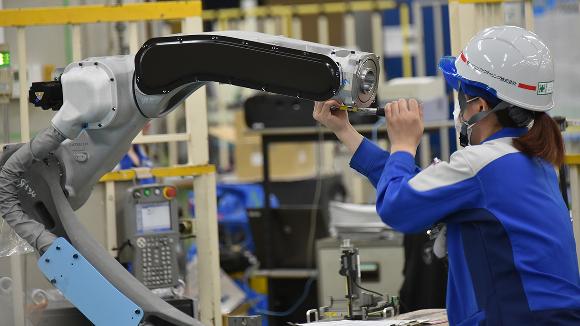Why human touch is still important in the automation era?
However, with this rapid shift towards automation, few basic things like physical or human touch or people-to-people communication can't be underestimated.

Artificial intelligence-led automation has become a major driver of growth and competitiveness for businesses around the world. From agriculture to finance, education and manufacturing to healthcare, almost every industry is embracing automation to boost productivity, reduce labor costs and drive sales.
According to a PwC analysis, AI, robotics and other forms of smart automation have the potential to bring great economic benefits, contributing up to USD 15 trillion to global GDP by 2030 which is more than the current output of China and India combined.
In the near future, AI-fuelled automation technologies will completely transform the workplace for everyone, making things better and faster. It will become crucial to address the world’s pressing challenges such as urban mobility, climate change, quality healthcare, smart cities, clean energy and more.
However, with this rapid shift towards automation, few basic things like physical or human touch or people-to-people communication can't be underestimated. In a world dominated by robots, chatbots, drones, and other machine learning and artificial intelligence-powered technologies, the power of human touch is still relevant.
Customer experience (CX)
While automation technologies are marching forward at an unprecedented rate, few industries including hospitality, healthcare, and education that require deep human expertise, supervision, soft skills such as empathy and advice, have a relatively low technical potential for automation.
When it comes to customer satisfaction, a self-service model is not enough. In the healthcare sector, for instance, robots and AI may work alongside doctors for better service delivery, but can't displace or overtake them, especially when a patient expects human touch.
Customers are the reason we open our doors every day, and keep the machines humming all night long. Customers determine what we eat, where we live, whether we stay in business
According to a report released by consulting firm McKinsey & Company, healthcare activities such as preparing food in hospitals and administering non-intravenous medications or other complex activities such as administering anesthesia during simple procedures or reading radiological scans could be automated. The healthcare sector, as a whole, has a technical potential for automation of about 36 percent, but the potential is lower for health professionals whose daily activities require expertise and direct contact with patients.
Similarly, the education sector that needs deep expertise and complex people-to-people interactions, have the low technical potential for automation.
From packaging objects and maintaining sales records to stocking merchandise, the retailing sector, after the manufacturing and service sector, has a high technical potential for automation. However, cognitive and social skills are equally important. Advising customers about which cuts of meat or what color shoes to buy requires judgment and emotional intelligence says the report.
Another McKinsey report on B2B customers highlights the fact that customers seek both a great digital interaction and a great human experience. Companies that add the human touch to digital sales consistently outperform their peers, in terms of revenues and profit. Companies that are digital from start to finish today could see even higher growth if they reintroduce the human touch to the start of the buying journey, the report says.
Overall, enhancing customer experience requires building authentic relationships with customers who still prefer people-to-people communication over people-to-machine interaction. According to tech experts, machines can surpass humans in many aspects, but when it comes to replacing human touch, there is still a very long way to go. Humans, undoubtedly, beat machines when it comes to flexibility, creativity, interpersonal skills, and empathy.
Balancing digital and human interactions
Technological development is meant to complement human capabilities and not supplant them in any way. To stay competitive in a fast-evolving market and elevate customer experience, it is critical to strike the right balance between digital and physical touch.
Machines have the ability to assemble things faster than any human ever could, but humans possess the analytics, domain expertise, and valuable knowledge required to solve problems and optimize factory floor production
While automation will displace certain types of jobs, it will also boost business operations and create new job opportunities. In the foreseeable future, humans and machines will collaborate, complementing each other's strengths and weaknesses in a unified digital workforce.
A Deloitte study says that the intelligent automation solutions may be able to augment human performance by automating certain parts of a task, thus freeing individuals to focus on more “human” aspects that require empathic problem-solving abilities, social skills, and emotional intelligence. By redesigning jobs, more companies will embrace the emerging trend of a no-collar workforce where humans and machines become co-workers to achieve desired goals. The collaborative work environment offers such opportunities that may be too promising to ignore.
Instead of considering when to use automation, organizations need to understand where to use it to reap maximum benefits. To conquer the automation anxiety, businesses need to redesign jobs, re-skill and up-skill human workforce with demand-driven tech skills to help them adapt to the changing labor market and lastly building an inclusive and human-centered approach that focuses on augmenting human intelligence rather than replacing it with machine intelligence.
(Disclaimer: The opinions expressed are the personal views of the author. The facts and opinions appearing in the article do not reflect the views of Devdiscourse and Devdiscourse does not claim any responsibility for the same.)
- FIRST PUBLISHED IN:
- Devdiscourse










